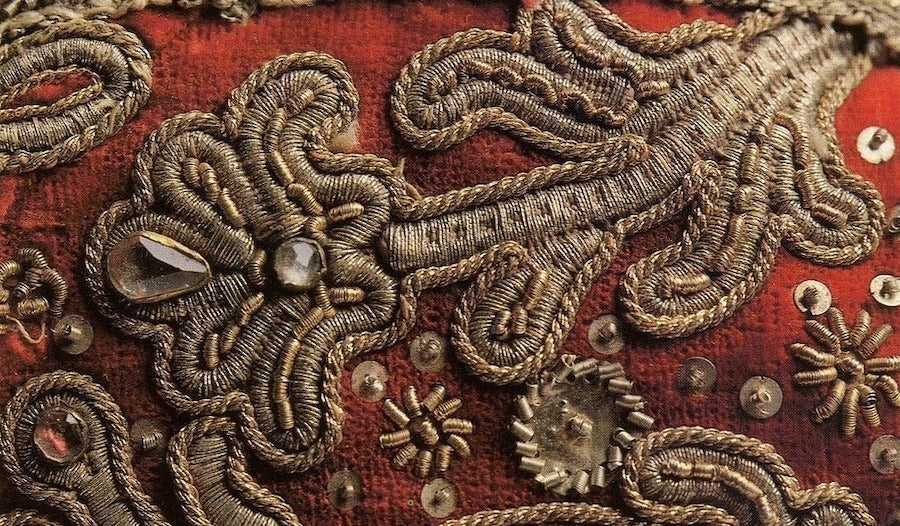
ALL THAT GLISTERS
Image: Zardosi sample, courtesy of Nidhi Garg Allen
This week we are joined by Nidhi Garg Allen, an alumnus of Parsons School of Design and Adjunct Professor at the Fashion Institute of Technology. A technologist turned artisan entrepreneur, she is the founder and CEO of Marasim. Marasim emerged from Nidhi’s curiosity for the history and beauty of her own Indian culture, with craftsmanship and textiles her medium of inquiry. Based in New York, Marasim is now committed to preserving artisanal textiles that use regional techniques, without uprooting craftspeople from their native communities. Marasim designs and develops high-quality products, in collaboration with traditional Indian artisans, for luxury designers, such as Gabriela Hearst, Tory Burch, Oscar de la Renta, and Bode.
Text: Nidhi Garg Allen
Apart from its rarity, and its inimitable lustre, gold's ability to be beaten into thin sheets or drawn into fine wires makes it highly desirable. These pure gold wires can be used for making jewellery, but they are too soft to be functional in weaving or embroidery. Silver, by contrast, is not so malleable or ductile. That's why silver is used as an alloy, to counteract the inherent softness of gold. The wire, or 'zari', that is used in all gold embroidery or weaving work is, in reality, a gilded silver wire.

Image: A zardozi sample by Marasim
Traditionally, a bar of silver would be wrapped once or twice with gold leaf, then placed in a furnace until the gold melted and united with silver. The bar of silver, now gilded, would then be swiped through a series of round openings on a steel plate to produce uniformly thin wires wholly coated in gold.
Another gold wire commonly used by traditional weavers and embroiders is 'kasab', or 'kalabattu.' To add more fluidity to the gold wire, it is wrapped on a silken thread. The gold wire covers the silk thread and acquires its fluidity. The third type of gold wire, 'badla', is simply a flat metal strip made by hammering the gold wire. These creative manipulations of delicate gold wires enable the artisan to manoeuvre on the textile surface more easily and artistically, and to combine the threads with other materials such as glass beads, stones, and colourful threads. In addition to these thin and flat wires, gold coil or spangle forms, such as salma, dabka, nakshi, kora, and chikna, may also be used as raw materials for zardozi embroidery. In the local language, coils are known as 'salma', and spangle or sequins 'sitara'. Hence, zardozi embroidery is also called 'salma sitara ka kaam' (salma sitara work).

Image: A 20th century silhouette, courtesy of Nidhi Garg Allen
Over time, the processes for making these wires have become heavily mechanized, making the use of pure and delicate zari now a dying craft. There has also been a drastic change in the raw materials used to create these wires, primarily to reduce costs. Using a gold solution instead of a gold leaf to gild the silver wire, replacing the silver wire with an alloy of silver and copper, or copper wire overlaid with gold and silver solution have all become common. The arrival of cheap polyester yarn, with its smooth feel and bright gold lustre, has dented the use of authentic raw materials. Some argue that making products more affordable allows this craft to survive.

1 comment
Nice!!!🇬🇷🙏